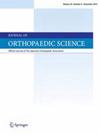Toxic effects of local anesthetics on rat fibroblasts: An in-vitro study
IF 1.5
4区 医学
Q3 ORTHOPEDICS
引用次数: 0
Abstract
Background
Infusion catheters facilitate a controlled infusion of local anesthetic (LA) for pain control after surgery. However, their potential effects on healing fibroblasts are unspecified.
Methods
Rat synovial fibroblasts were cultured in 12-well plates. Dilutions were prepared in a solution containing reduced-serum media and 0.9% sodium chloride in 1:1 concentration. Each well was treated with 500 μl of the appropriate LA dilution or normal saline for 15- or 30-min. LA dilutions included: 0.5% ropivacaine HCl, 0.2% ropivacaine HCl, 1% lidocaine HCl and epinephrine 1:100,000, 1% lidocaine HCl, 0.5% bupivacaine HCl and epinephrine 1:200,000, and 0.5% bupivacaine HCl. This was replicated three times. Dilution of each LA whereby 50% of the cells were unviable (Lethal dose 50 [LD50]) was analyzed.
Results
LD50 was reached for lidocaine and bupivacaine, but not ropivacaine. Lidocaine 1% with epinephrine is toxic at 30-min at 1/4 and 1/2 sample dilutions. Bupivacaine 0.5% was found to be toxic at 30-min at 1/2 sample dilution. Bupivacaine 0.5% with epinephrine was found to be toxic at 15- and 30-min at 1/4 sample dilution. Lidocaine 1% was found to be toxic at 15- and 30-min at 1/2 sample dilution. Ropivacaine 0.2% and 0.5% remained below LD50 at all time-points and concentrations, with 0.2% demonstrating the least cell death.
Conclusions
Though pain pumps are generally efficacious, LAs may inhibit fibroblasts, including perineural fibroblast and endoneurial fibroblast-like cells, which may contribute to persistent nerve deficits, delayed neurogenic pain, and negatively impact healing. Should a continuous infusion be used, our data supports ropivacaine 0.2%.
Level of evidence
Basic Science Study; Animal model.
局麻药对大鼠成纤维细胞的毒性作用:体外研究
背景:在手术后,使用灌注导管控制局部麻醉(LA)以控制疼痛。然而,它们对成纤维细胞愈合的潜在影响尚不明确。方法采用12孔板培养大鼠滑膜成纤维细胞。在含有还原血清培养基和0.9%氯化钠以1:1浓度的溶液中配制稀释液。每孔用500 μl适当的LA稀释液或生理盐水处理15或30分钟。LA稀释度包括:0.5%盐酸罗哌卡因、0.2%盐酸罗哌卡因、1%盐酸利多卡因与肾上腺素1:10万、1%盐酸利多卡因、0.5%盐酸布比卡因与肾上腺素1:20万、0.5%盐酸布比卡因。这个实验重复了三次。对每个LA进行稀释,其中50%的细胞不活(致死剂量50 [LD50])进行分析。结果利多卡因和布比卡因的sld50均达不到,罗哌卡因的sld50均达不到。1%利多卡因加肾上腺素在1/4和1/2样品稀释度下30分钟毒性。0.5%布比卡因在1/2样品稀释30分钟后发现有毒性。0.5%布比卡因加肾上腺素在1/4样品稀释15和30分钟时发现有毒性。1%利多卡因在1/2样品稀释15和30分钟时发现有毒性。0.2%和0.5%的罗哌卡因在所有时间点和浓度下均低于LD50, 0.2%的罗哌卡因表现出最少的细胞死亡。结论虽然疼痛泵通常有效,但LAs可能抑制成纤维细胞,包括神经周围成纤维细胞和神经内膜成纤维细胞样细胞,这可能导致持续的神经缺损,延迟的神经源性疼痛,并对愈合产生负面影响。如果使用持续输注,我们的数据支持0.2%罗哌卡因。证据水平;基础科学研究;动物模型。
本文章由计算机程序翻译,如有差异,请以英文原文为准。
求助全文
约1分钟内获得全文
求助全文
来源期刊

Journal of Orthopaedic Science
医学-整形外科
CiteScore
3.00
自引率
0.00%
发文量
290
审稿时长
90 days
期刊介绍:
The Journal of Orthopaedic Science is the official peer-reviewed journal of the Japanese Orthopaedic Association. The journal publishes the latest researches and topical debates in all fields of clinical and experimental orthopaedics, including musculoskeletal medicine, sports medicine, locomotive syndrome, trauma, paediatrics, oncology and biomaterials, as well as basic researches.
 求助内容:
求助内容: 应助结果提醒方式:
应助结果提醒方式:


